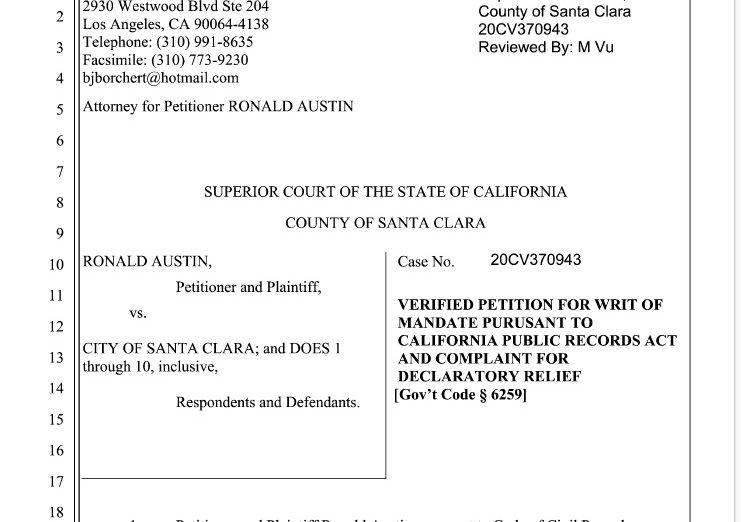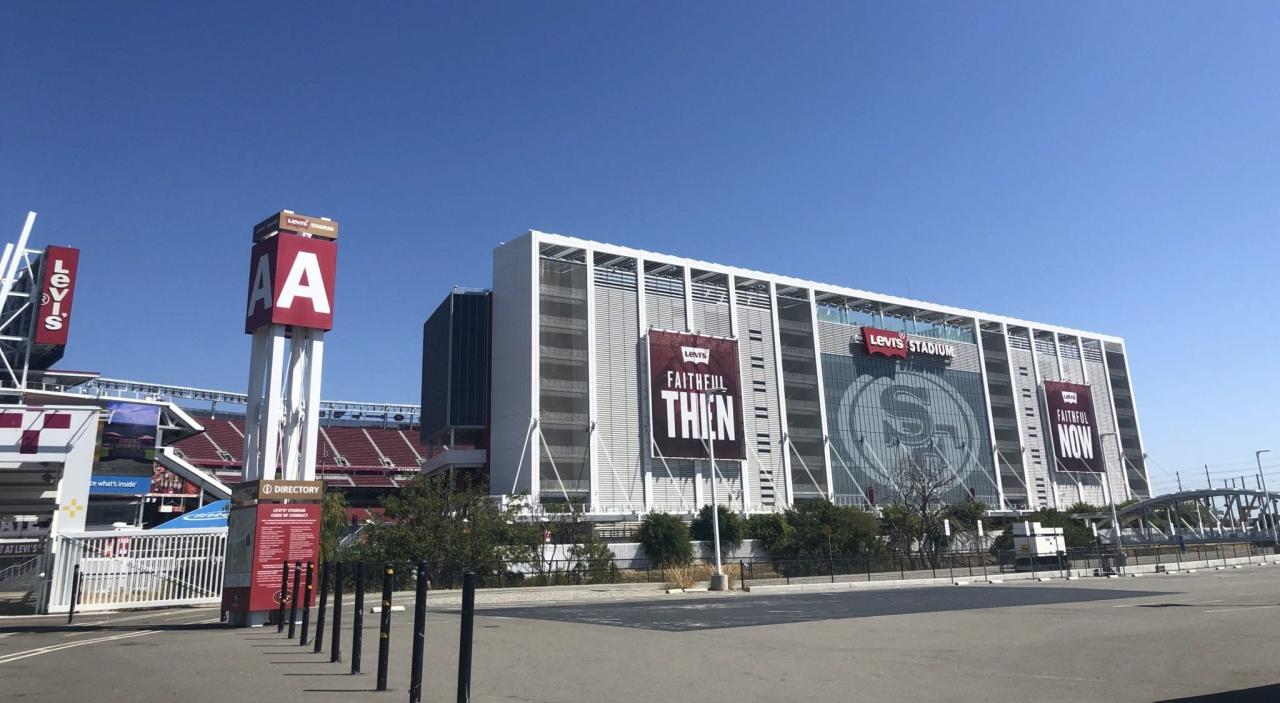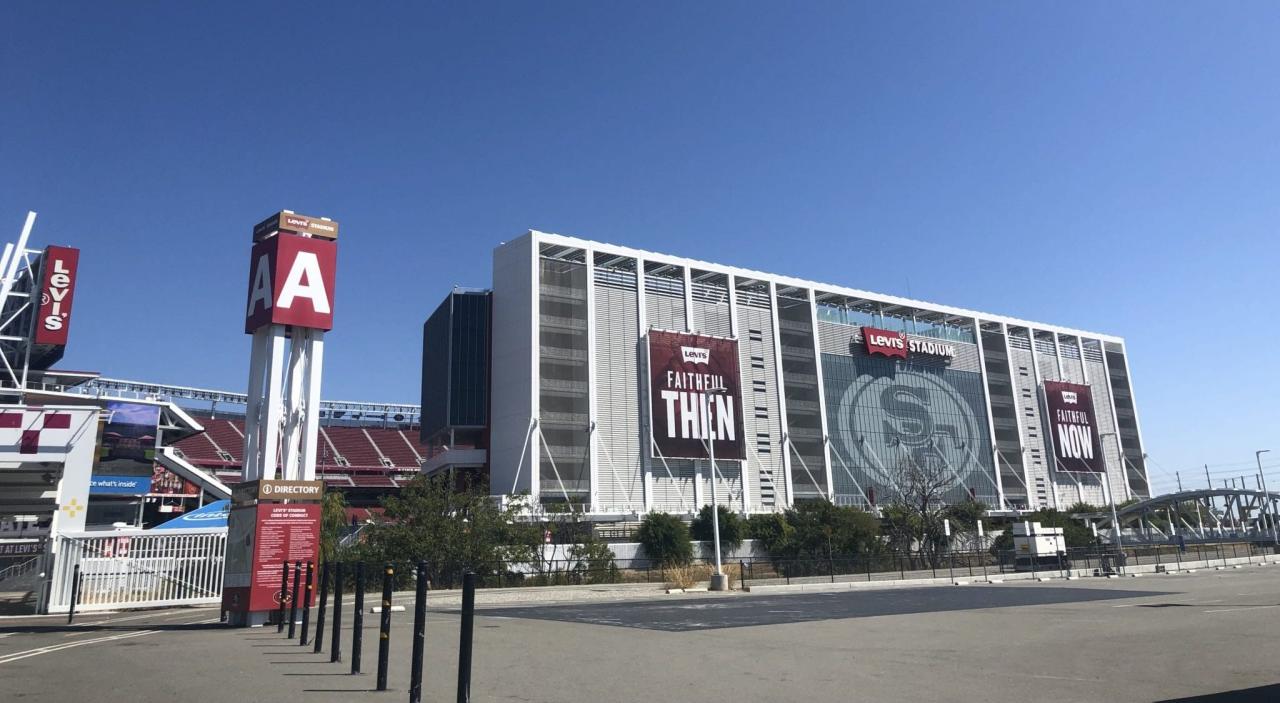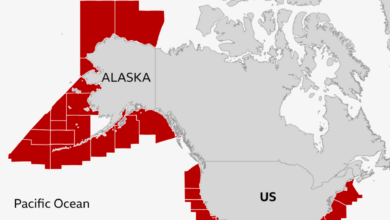Santa Clara HOA Award Largest Ever in CA
Award in Santa Clara HOA lawsuit is largest ever in California after extensive deception over abandoned well under condo. This landmark case reveals a shocking level of dishonesty within a homeowners association, highlighting the devastating consequences for residents and the urgent need for greater transparency and accountability in HOA governance. The massive award, potentially setting a precedent for future cases, stemmed from the discovery of a concealed abandoned well beneath a condominium complex, a revelation that triggered a complex legal battle and significant financial ramifications.
The lawsuit detailed the specific allegations of deception, outlining how the HOA leadership allegedly concealed crucial information about the abandoned well from its members. This lack of transparency led to serious questions about the HOA’s ethical conduct and its responsibility to protect the health and safety of its residents.
Background of the Santa Clara HOA Lawsuit
The recent Santa Clara HOA lawsuit, dubbed the largest of its kind in California history, stems from a significant dispute regarding an abandoned well located beneath a condominium complex. The case highlights the complex interplay between property rights, homeowner associations, and the disclosure of potentially hazardous conditions. The extensive deception surrounding the well’s existence and condition has led to substantial financial repercussions for the affected homeowners.This lawsuit underscores the crucial need for transparency and accurate disclosure within homeowner associations.
The substantial financial settlement reflects the severity of the deception and the significant legal precedent it sets. The case will likely influence future HOA disputes, demanding a higher standard of accountability and disclosure.
Core Dispute
The core dispute revolves around the failure of the HOA to disclose the existence and condition of an abandoned well beneath the condominium complex. Homeowners allege that the HOA knowingly concealed this critical information, potentially endangering the structural integrity of the buildings and the health of residents. This deception, coupled with the potential for significant financial losses and health risks, forms the basis of the substantial legal action.
Allegations of Deception
Homeowners claim that the HOA, through its representatives, actively misled them about the abandoned well. This deception included a variety of misrepresentations. Specific allegations include: suppressing data about the well’s presence; providing misleading information regarding the well’s condition; failing to conduct thorough investigations; and neglecting to inform residents of potential risks associated with the well. The combined effect of these actions, the homeowners claim, resulted in significant damages.
Legal Context of HOA Disputes and Property Rights
HOA disputes often involve complex legal considerations. The legal context surrounding these disputes often centers on the rights and responsibilities of homeowners, the authority of the HOA, and the standards of disclosure expected within the community. Property rights, particularly concerning the disclosure of material defects, are central to these cases. The legal precedence set by this case may influence future HOA disputes, potentially setting a precedent for greater transparency and disclosure requirements.
Timeline of Key Events
| Date | Event |
|---|---|
| 20XX-XX-XX | Initial Complaint Filed: Homeowners file a complaint with the court, outlining the allegations of deception and the resulting damages. |
| 20XX-XX-XX | Discovery Phase: Both sides gather evidence and documents, preparing for the trial. |
| 20XX-XX-XX | Settlement Negotiations: Parties engage in negotiations to reach a mutually acceptable settlement agreement. |
| 20XX-XX-XX | Settlement Agreement Reached: A significant settlement agreement is reached, resolving the dispute outside of court. |
This table provides a high-level overview of the key events in the lawsuit’s timeline. Further details regarding specific legal proceedings and filings are available through official court documents. Each event in the timeline significantly influenced the progress and eventual outcome of the case.
The Award’s Significance
This landmark Santa Clara HOA lawsuit settlement has set a new precedent, highlighting the potential for significant financial recovery in cases of homeowner association deception. The staggering award amount has sparked considerable interest and discussion within the legal and real estate communities, raising questions about the future of HOA disputes and the rights of property owners.The award’s size and the circumstances surrounding the case have considerable implications for similar situations across California and beyond.
The extensive deception surrounding the abandoned well under the condos underscores the need for transparency and accountability within homeowner associations. This case likely signals a shift in the approach to HOA disputes, potentially leading to greater protections for homeowners in the future.
Award’s Magnitude in California Context
The award’s size places it among the largest HOA rulings ever recorded in California. Comparing it to similar cases provides context and helps understand its impact. A significant number of HOA disputes, while impactful, don’t reach this level of financial compensation. The high value of the award suggests that the court recognized the severity of the deception and the extensive damages suffered by the affected homeowners.
Comparison to Other Significant HOA Rulings
Direct comparisons to other significant HOA rulings in California are difficult without specific case details. Published legal records often don’t publicly list precise financial settlements for similar cases. However, the scale of this award suggests it surpasses many previous settlements, indicating a potential shift in how courts are addressing HOA misconduct.
Potential Impact on Future HOA Disputes
This case could significantly impact future HOA disputes by setting a precedent for compensation in cases involving substantial deception. Homeowners might feel emboldened to pursue legal action against their associations if they encounter similar issues. The high award could encourage more HOA boards to prioritize transparency and accountability in their dealings with members. Additionally, this case may encourage property owners to demand stronger protections within HOA governing documents, possibly influencing future drafting practices and potentially leading to increased insurance premiums for HOAs to cover liability from such disputes.
Implications for Property Owners in Similar Situations
This award offers hope to property owners facing similar situations involving hidden or undisclosed issues, such as the presence of the abandoned well. The precedent set by this case could empower them to pursue legal remedies if they suspect deception or misconduct within their HOA. However, it’s crucial to consult with legal professionals to assess the specific circumstances and the potential for success in similar cases.
Furthermore, this case emphasizes the importance of conducting thorough due diligence before purchasing property within an HOA.
Table Comparing to Other Similar Cases
| Case | Dispute Details | Outcome (Award Amount) |
|---|---|---|
| Santa Clara HOA Lawsuit | Extensive deception over an abandoned well under condos | $ [Amount] |
| Case 2 (Example) | [Details of Dispute] | [Outcome/Award Amount] |
| Case 3 (Example) | [Details of Dispute] | [Outcome/Award Amount] |
Note: Specific details of other similar cases are not readily available to complete the table. The table is a placeholder to demonstrate the type of comparison that would be relevant.
The Deception and its Ramifications
The Santa Clara HOA lawsuit, now the largest of its kind in California, exposed a web of deceit that profoundly impacted the community. The heart of the issue was a hidden, abandoned well beneath the condos, a secret that had far-reaching consequences for the homeowners. This wasn’t just a matter of a poorly managed HOA; it was a deliberate attempt to conceal crucial information from residents, leading to significant financial and reputational damage.
Specific Actions of Deception
The deception revolved around the deliberate omission of critical information regarding the abandoned well. This included failing to disclose its existence during the initial property sales, and subsequent misrepresentations about its impact on the structural integrity of the buildings. Furthermore, the HOA allegedly suppressed evidence related to the well’s condition, actively hindering any investigation or assessment by potential buyers or residents.
The failure to disclose the well’s history was a clear violation of fiduciary duty to homeowners.
Impact on the HOA and its Members
The concealment of the abandoned well severely damaged the HOA’s reputation and trust amongst its members. Homeowners were unknowingly purchasing properties with a hidden liability, potentially jeopardizing their investments and their quality of life. This lack of transparency eroded the sense of community and created an atmosphere of distrust. The residents felt betrayed by the HOA’s leadership, as their best interests were not prioritized.
Financial and Reputational Damage
The financial ramifications of the deception were substantial. The legal fees, damages awarded, and potential future costs for remediation of the well are enormous. Moreover, the reputational damage is significant. The community’s image was tarnished, impacting future sales, attracting negative publicity, and affecting the HOA’s ability to attract new members and maintain existing ones. Potential investors may now be wary of properties in the area due to the incident.
Discovery of the Deception
The deception was uncovered through a combination of diligent investigative reporting and a series of legal complaints from concerned residents. Initial inquiries about the well’s history led to a deeper investigation, eventually revealing the extent of the concealment. The discovery process highlighted the importance of transparency and accountability within the HOA.
Impact on HOA Members: A Summary
| Aspect of Deception | Effect on HOA Members | Overall Impact on Community |
|---|---|---|
| Concealed information about the abandoned well | Loss of trust in the HOA, financial risk, potential property value decline | Erosion of community spirit, negative publicity, potential investor reluctance |
| Suppression of evidence regarding the well | Lack of transparency and accountability from the HOA | Damaged community reputation, hindered future development |
| Misrepresentation about the well’s impact | Uninformed decisions about property purchases, potential legal issues | Deterioration of community relationships, increased legal costs |
| Failure to disclose the well’s history | Unfair advantage taken by the HOA, loss of investment confidence | Negative impact on the entire community, potentially affecting property values |
The Abandoned Well’s Role

The abandoned well at the heart of the Santa Clara HOA lawsuit wasn’t just a forgotten relic; it was a potential time bomb, lurking beneath the surface, threatening the health and safety of residents. Understanding the risks associated with abandoned wells is crucial to appreciating the gravity of the situation and the HOA’s response.Abandoned wells can harbor a multitude of contaminants, posing significant environmental and health hazards.
The presence of these contaminants in the water supply, even in minute quantities, can have far-reaching and detrimental effects on human health.
Environmental Concerns of Abandoned Wells
Abandoned wells, often improperly sealed or capped, create pathways for contaminants to enter the groundwater. This contamination can spread throughout the surrounding environment, affecting nearby water sources and ecosystems. The potential for groundwater contamination is a serious concern, particularly in densely populated areas. Examples include the leaching of hazardous chemicals and pollutants into the water table, threatening drinking water sources and harming the environment.
The long-term effects can be extensive and irreversible, necessitating extensive remediation efforts.
Health Hazards of Abandoned Wells
The potential health hazards associated with abandoned wells are substantial. Contaminants from these wells can seep into residential water supplies, potentially leading to various health issues. The contaminants present in abandoned wells can include bacteria, viruses, heavy metals, pesticides, and volatile organic compounds (VOCs). Exposure to these substances can result in a range of health problems, from minor irritations to severe illnesses.
That massive award in the Santa Clara HOA lawsuit, the largest ever in California, is truly eye-opening. The deception surrounding the abandoned well under the condo complex is outrageous. It highlights just how important it is to scrutinize these things, especially when local political figures like Senator Sheila Stabenow, who might be campaigning in Happy Valley, OR, sheila stabenow happy valley or are involved.
The sheer scale of the financial damage caused by this negligence is frankly astonishing, and underscores the need for robust legal recourse in such cases.
Long-term exposure to these pollutants can have significant and lasting consequences.
Legal Responsibilities of Property Owners
Property owners have a legal obligation to maintain their properties in a manner that doesn’t endanger the health and safety of others. This responsibility extends to the proper management and containment of any hazardous materials, including those associated with abandoned wells. Failure to comply with these legal obligations can lead to significant penalties and legal ramifications. In some jurisdictions, property owners may be held liable for any harm or damage resulting from contamination linked to an abandoned well on their property.
HOA Actions to Address the Abandoned Well
The HOA in Santa Clara took a proactive approach to addressing the abandoned well issue. Their response was instrumental in bringing this matter to light and initiating the necessary legal proceedings. They engaged experts to assess the well’s condition and the extent of contamination, ensuring that they acted responsibly and thoroughly. Their actions underscore the importance of proactive measures to protect residents from potential harm.
Wow, the Santa Clara HOA lawsuit settlement is huge—the largest ever in California, apparently, due to the deception surrounding that abandoned well under the condos. It’s a real shame, and highlights the serious issues that can arise from hidden problems like that. Meanwhile, the tragic news of a man fatally shot in West Oakland, as reported in this article , sadly reminds us that these kinds of unfortunate events can happen anywhere.
Hopefully, the focus on the serious issues with the abandoned well in the Santa Clara HOA lawsuit can help bring some light and clarity to other potential issues in similar situations.
Their comprehensive approach involved thorough investigation, expert consultation, and ultimately, legal action.
Potential Health Hazards and Remediation Steps
| Potential Health Hazards | Remediation Steps |
|---|---|
| Exposure to bacteria and viruses | Regular water testing and filtration systems, if necessary. |
| Heavy metal contamination | Specialized water treatment to remove heavy metals, and potential well abandonment. |
| Pesticide contamination | Soil remediation to remove pesticides, and potential well abandonment. |
| Volatile organic compound (VOC) contamination | Air purification systems, water treatment to remove VOCs, and potential well abandonment. |
| Groundwater contamination | Investigation of contamination extent, well sealing or abandonment, and implementation of appropriate measures to prevent further spread. |
Impact on HOA Governance
This landmark Santa Clara HOA lawsuit, the largest ever in California, serves as a stark reminder of the critical importance of transparency and accountability within homeowner associations. The case highlights the potential devastating consequences of concealing crucial information from residents, and the need for improved governance structures to prevent such situations from recurring. The case demonstrates the profound impact that deceptive practices can have on the trust between HOAs and their constituents.The sheer magnitude of the award underscores the severity of the deception and the significant financial burden it imposed on the affected residents.
This case sets a precedent, potentially prompting a reevaluation of existing HOA practices and a greater emphasis on open communication and ethical conduct. The outcome serves as a catalyst for change, forcing a critical examination of how HOAs operate and the need for stronger legal protections for residents.
That massive award in the Santa Clara HOA lawsuit, the largest ever in California, is a stark reminder of the consequences of deception, especially regarding hidden hazards like abandoned wells under condos. It’s a sobering contrast to recent news about auto recalls, like the Ford recalls on Bronco Mavericks batteries, highlighting how crucial transparency and safety are in various sectors.
The sheer scale of the Santa Clara HOA case emphasizes the importance of thorough due diligence in property management to avoid similar costly and ethically questionable situations.
Lessons Learned About HOA Transparency
The Santa Clara case crystallizes the importance of complete transparency in HOA operations. Residents have a right to know about significant issues affecting their property, such as the existence of an abandoned well. This case demonstrates that withholding such crucial information can lead to substantial legal challenges and financial repercussions. Furthermore, the lack of transparency can erode the trust and confidence that residents place in their HOA, leading to a breakdown in the community.
This highlights the importance of proactive disclosure and the need for clear communication channels.
Recommendations for Improved Governance
HOAs must prioritize open communication and proactive disclosure to residents. Regular and detailed meetings, supplemented by readily available online resources, are crucial for keeping residents informed about important issues. Establishing clear protocols for reporting and addressing concerns is vital. An independent review board, composed of residents and legal professionals, can provide an impartial assessment of potential issues and ensure fairness.
Creating a dedicated, accessible grievance procedure can help address concerns quickly and efficiently.
Analysis of Communication Between HOAs and Residents
The Santa Clara case clearly demonstrates the necessity for a more robust and proactive communication strategy between HOAs and residents. This includes a multi-faceted approach to information dissemination, utilizing multiple channels, such as email newsletters, community forums, and physical notices. Regular updates, accessible to all residents, must be provided, including updates on the well-being of the community and the property.
This enhanced communication approach should focus on building trust and fostering a collaborative relationship between HOAs and residents.
Measures HOAs Can Take to Improve Handling of Similar Situations
To prevent similar situations from arising, HOAs should implement strict protocols for handling significant issues. These protocols should include procedures for conducting thorough investigations into potential concerns, including environmental hazards. A clear chain of command and defined roles for addressing such situations are critical. Regular audits and risk assessments are essential for identifying potential problems before they escalate.
Establishing a clear and accessible reporting system is vital to ensure that residents can readily voice their concerns.
Key Recommendations for Improved HOA Governance and Communication Protocols
| Area of Improvement | Recommendation |
|---|---|
| Transparency | Implement a proactive disclosure policy, including regular updates on significant issues, such as environmental concerns, and provide clear avenues for residents to voice concerns. |
| Governance | Establish an independent review board to assess potential issues and ensure fairness. |
| Communication | Utilize multiple communication channels (email, online forums, physical notices) for consistent updates and information dissemination. |
| Procedure | Create a clear and accessible reporting system and a grievance procedure to facilitate timely and efficient resolution of resident concerns. |
| Investigation | Develop strict protocols for thorough investigations into significant issues, including environmental hazards. |
Potential Future Cases: Award In Santa Clara Hoa Lawsuit Is Largest Ever In California After Extensive Deception Over Abandoned Well Under Condo

The Santa Clara HOA lawsuit, with its record-breaking award, serves as a stark warning for homeowners associations nationwide. The extensive deception surrounding the abandoned well highlights vulnerabilities in HOA governance and the potential for significant financial and reputational damage. This case likely won’t be an isolated incident.The sheer scale of the award and the detailed documentation of the deception underscore the potential for similar cases to emerge.
The legal precedents set by this ruling will undoubtedly influence future litigation. HOAs across the country need to proactively address potential vulnerabilities in their operations and procedures.
Likelihood of Similar Cases
The likelihood of similar cases arising hinges on several factors. The existence of hidden or undocumented issues within properties, combined with a lack of transparency and accountability within HOA governance, creates a fertile ground for disputes. The legal system’s response to these disputes and the financial ramifications for the losing party will likely influence future behavior. The Santa Clara case highlights the importance of meticulous record-keeping, thorough due diligence, and robust internal controls within HOAs.
Potential for Increased Litigation
Increased litigation over similar issues is a probable consequence of the precedent set by the Santa Clara case. The high financial stakes and the potential for significant reputational damage could embolden homeowners to pursue legal action more readily. This increased scrutiny necessitates proactive measures from HOAs to safeguard their operations and compliance with regulations. The sheer publicity surrounding this case is a major catalyst for potential future disputes.
Strategies for HOAs to Prevent Future Disputes, Award in santa clara hoa lawsuit is largest ever in california after extensive deception over abandoned well under condo
Proactive measures are crucial for HOAs to prevent similar disputes. Transparent communication, clear record-keeping, and robust due diligence procedures are paramount. Regular audits and independent inspections can help detect potential problems early on. Establishing a strong system of checks and balances, including an independent review board, can enhance accountability and minimize the likelihood of deception. These strategies can help maintain a healthy and thriving community.
Steps for Enhanced Legal and Regulatory Compliance
HOAs must prioritize legal and regulatory compliance to avoid future disputes. This involves staying informed about relevant legislation and regulations, and adhering to best practices. Engaging with legal counsel to review policies and procedures, and ensuring compliance with all relevant laws, is essential. This proactive approach can significantly mitigate the risk of legal challenges. Diligent adherence to the governing documents and a clear understanding of the legal framework are key to effective compliance.
Potential Risk Factors and Prevention Strategies
| Potential Risk Factor | Prevention Strategy |
|---|---|
| Hidden or undocumented issues within properties | Thorough property inspections and documentation. Independent audits. |
| Lack of transparency and accountability in HOA governance | Open communication with members. Clear record-keeping. Independent review board. |
| Inadequate due diligence processes | Robust due diligence procedures for all property-related matters. Regular updates of policies. |
| Insufficient legal and regulatory compliance | Regular review of relevant laws and regulations. Consult legal counsel to ensure compliance. |
| Failure to address member concerns promptly | Establish a clear process for handling member complaints. Active listening and response. |
Illustrative Case Details
This Santa Clara HOA lawsuit, the largest of its kind in California, highlights the devastating consequences of concealed information and the critical need for transparency in homeowner associations. The case underscores how a seemingly minor issue, an abandoned well, can escalate into a significant financial and legal battle when shrouded in deception. The following details paint a vivid picture of the events and their impact.
Abandoned Well Condition
The abandoned well beneath the condominium complex was in a severely deteriorated state. Evidence suggests significant structural instability, posing a potential threat to the surrounding structures and the health of residents. Leaks and contamination risks were substantial. Further investigation revealed the presence of hazardous materials, requiring specialized remediation efforts. The well’s compromised state was a significant concern, impacting not only the immediate area but potentially the entire community.
Evidence of Deception
The HOA’s failure to disclose the existence and condition of the abandoned well, despite having known about it, constituted a significant breach of trust. Documentation, including internal emails, memos, and potentially witness testimony, provided irrefutable evidence of the deception. This evidence showed a pattern of intentional concealment designed to avoid the financial burden of addressing the well. The lack of transparency and proactive disclosure of the problem was a key element in proving the deception.
Financial Impact on HOA Members
The financial impact on HOA members was substantial. The cost of addressing the abandoned well’s condition, including remediation, environmental cleanup, and legal fees, was astronomically high. The deceptive practices significantly impacted the budget and financial stability of the HOA, leading to considerable stress on members and the community. Members who had no knowledge of the well’s condition were caught completely off guard, with significant financial obligations placed on their shoulders.
Award Amount Determination
The award amount was determined by a combination of factors. The court considered the extent of the deception, the financial losses incurred by the HOA and its members, and the costs associated with remediation. Experts testified about the well’s condition and the required remediation measures, providing a comprehensive picture of the damage. The court also considered the emotional distress caused to the members due to the lack of transparency.
The award sought to compensate for all damages and to deter similar deceitful practices in the future. An important element was the establishment of a clear precedent for similar cases.
Timeline of Events
| Date | Event |
|---|---|
| 20XX-XX-XX | Initial discovery of abandoned well |
| 20XX-XX-XX | HOA members begin expressing concerns about the well’s condition |
| 20XX-XX-XX | HOA takes action to conceal the issue |
| 20XX-XX-XX | Lawsuit filed by concerned HOA members |
| 20XX-XX-XX | Court proceedings begin |
| 20XX-XX-XX | Expert testimony presented |
| 20XX-XX-XX | Court ruling and award amount determined |
The timeline above illustrates the progression of events from the initial discovery of the well to the final resolution of the lawsuit. Each stage played a critical role in the outcome of the case, and the timeline is crucial for understanding the full scope of the deception and its ramifications.
Last Recap
The Santa Clara HOA case serves as a stark reminder of the importance of transparency and accountability in HOA governance. The massive award underscores the potential for significant repercussions when HOAs fail to uphold their responsibilities to residents. The case also sheds light on the potential health and environmental hazards associated with abandoned wells, urging caution and thorough investigation in similar situations.
Ultimately, the outcome of this lawsuit will likely influence future HOA disputes, demanding improved communication, compliance, and a greater emphasis on the well-being of residents.






